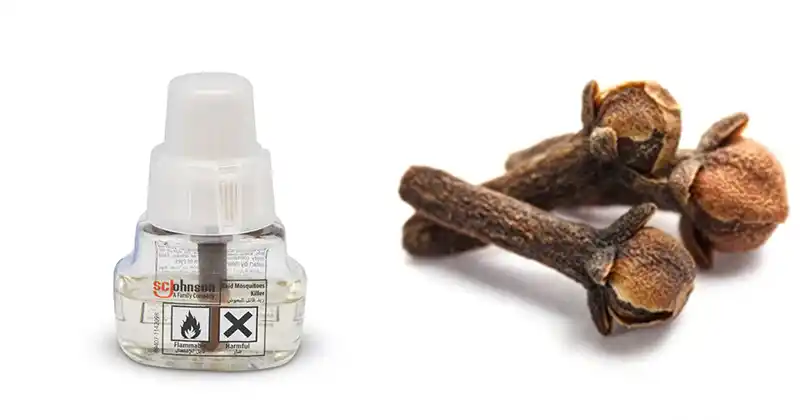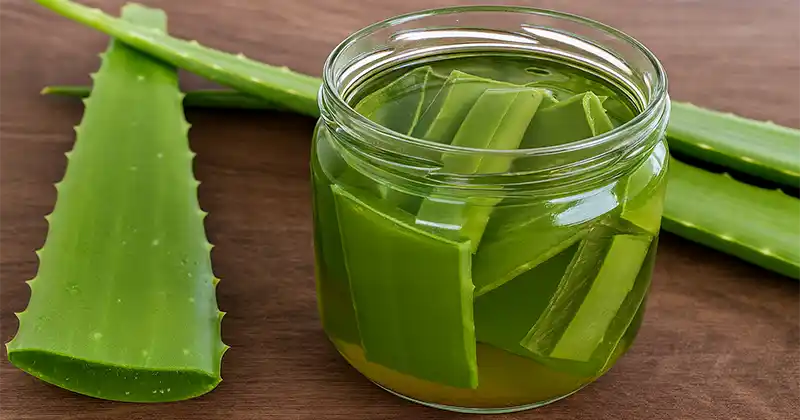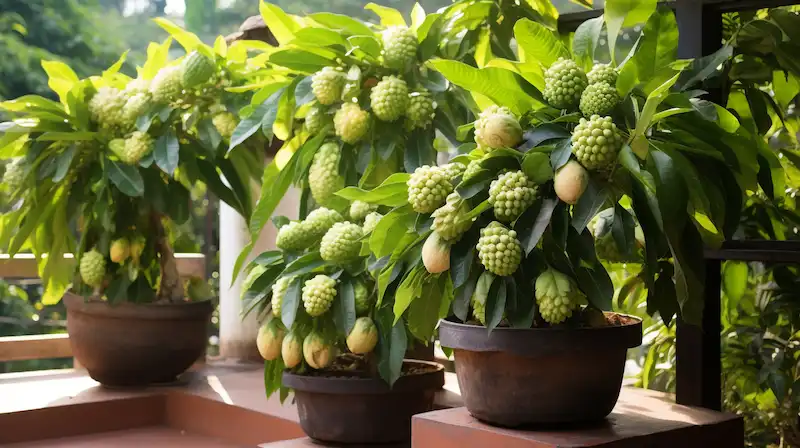Preparing your fruit trees for winter is crucial for their health and productivity in the following season. As temperatures drop, these trees require special care to thrive. Here are the seven best things you can do for your fruit trees before winter sets in:
1. Proper Pruning
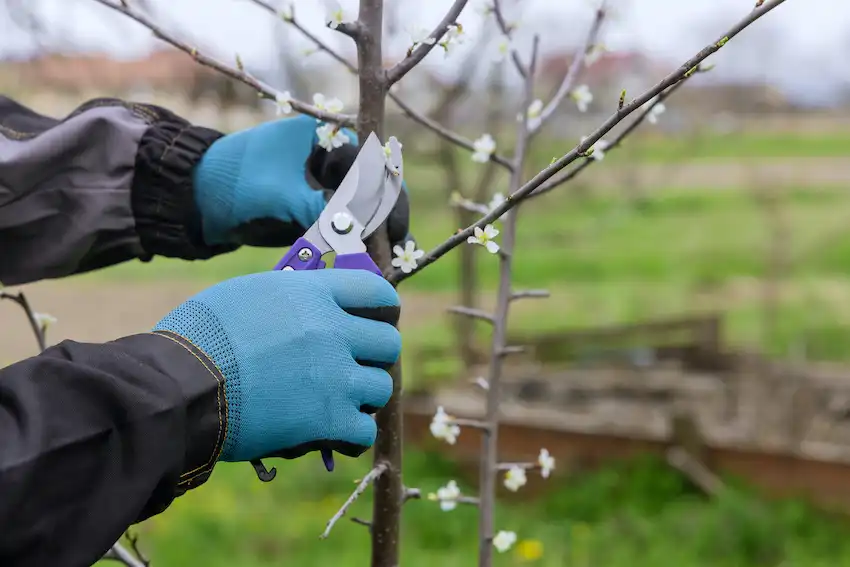
Pruning is essential for maintaining the health and structure of your fruit trees. Remove any dead or diseased branches to prevent the spread of infection. Pruning also allows for better air circulation and light penetration, which are vital for the tree’s overall health. Winter is often the best time for pruning since the trees are dormant.
2. Applying Mulch
Mulching helps regulate soil temperature, retains moisture, and suppresses weed growth. Apply a layer of organic mulch, like straw or wood chips, around the base of your trees. Be sure not to pile the mulch directly against the trunk to prevent rot and rodent damage.
3. Watering Thoroughly
Before the ground freezes, give your fruit trees a thorough watering. This step is crucial, especially in regions where winters are dry. Deep watering helps the tree to withstand the cold and prevent root damage from the freezing temperatures.
4. Fertilization
Apply a balanced fertilizer to provide essential nutrients and strengthen the trees before winter. However, avoid high-nitrogen fertilizers late in the season as they can stimulate new growth that will be vulnerable to winter damage.
5. Wrapping the Trunks
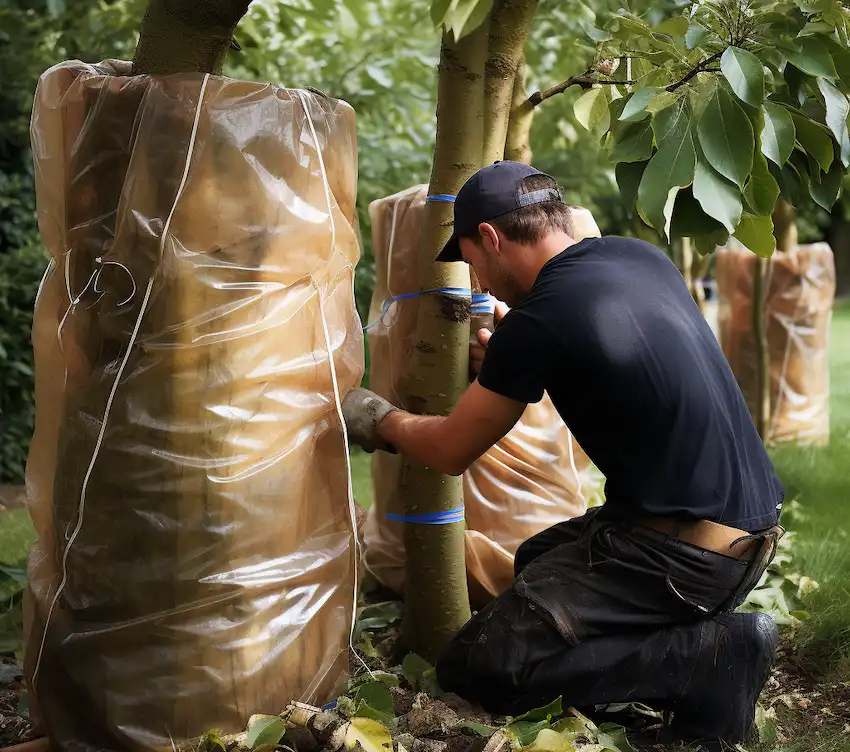

Wrapping the trunks with tree guards or plastic spirals can protect young trees from winter sunscald and rodent damage. Sunscald happens when the tree bark warms on sunny winter days and then rapidly refreezes at night, causing the bark to crack.
6. Pest and Disease Control
Inspect your trees for any signs of pests or diseases. Treat them appropriately before winter to reduce the chances of spring infestations. Removing fallen fruit and debris around the trees can also help prevent the overwintering of pests.
7. Checking Stakes and Supports
Ensure that any stakes or supports are secure. Winter storms and heavy snowfall can cause poorly supported trees to bend or break.
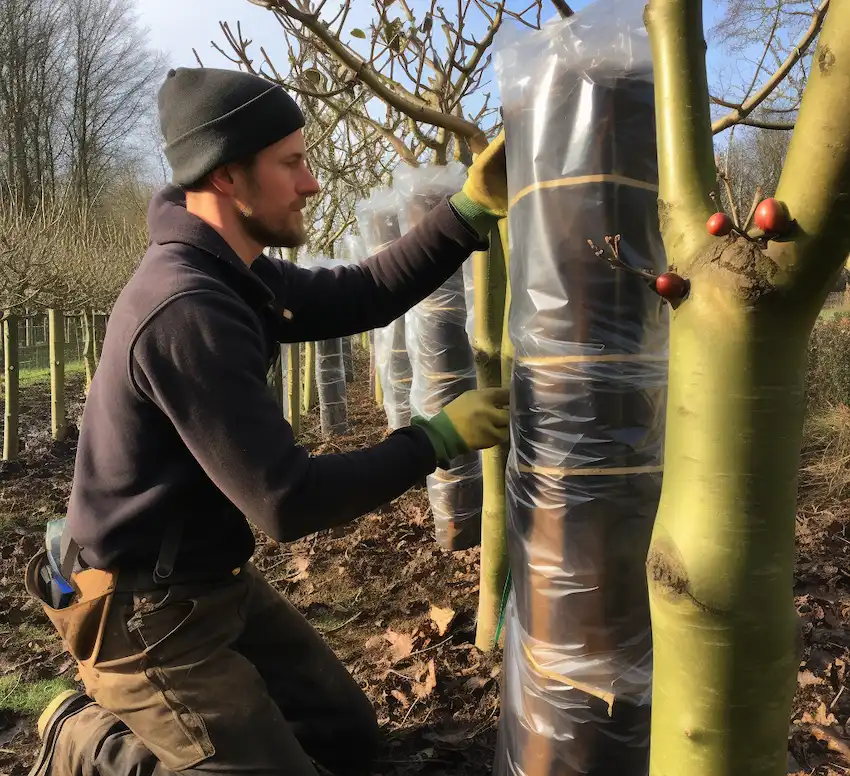

Taking these steps in the fall can greatly enhance your fruit trees’ ability to withstand the winter and emerge healthy in the spring. Each of these measures plays a crucial role in the overall well-being of your trees, setting the stage for a successful growing season. Remember, the care you provide your fruit trees in the fall is an investment in their future productivity and health.

